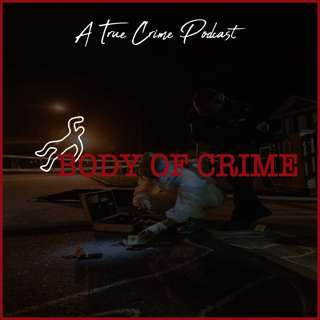
Unseen Battles: The Plight of Missing and Murdered Indigenous Women in the USA
Om episode
Welcome to today's case, file Unseen Battle, the plight of missing and murdered indigenous women in the U S ABody of Crime Podcast WebsiteLink TreePodcast Landing PageFacebookMMIWUSA.orgMMIWUSA Facebook PageMMIWUSA PayPal DonationsFree tickets for The Sound of FreedomViolence such as murder, rape, and other violent crime against Native Americans and Alaska and natives far exceed the national averages. For decades, native American and Alaska native communities have struggled with high rates of assault, abduction, and murder of women. Community advocates describe the crisis as a legacy of generations of government, policies of forced removal, land, seizures, and violence inflicted on native peoples.A study conducted by the National Institute of Justice found 84.3% of American Indian and Alaska native women have experienced violence in their lifetime, and of those 56.1%. Have experienced sexual violence overall, more than 1.5 million. American Indian and Alaska native women have experienced violence in their lifetime.When looking at missing and murdered cases, data shows that Native American and Alaska native women make up a significant portion of missing and murdered individuals according to the Centers for Disease Control and Prevention. C D C, national Intimate Partner and Sexual Violence Survey. American Indian and Alaska native women experienced the second highest rate of homicide in 2020.American Indian and Alaska native men had the second highest rate of homicide compared with males and other racial and ethnic groups. Homicide was in the top 10 leading causes of death of American Indian and Alaska Native women ages one to 45, and American Indian and Alaska Native men ages one to 54.One in seven American Indian and Alaskan native men were forced to penetrate someone during their lifetime. As human trafficking has become a world crisis, the Government Accountability Office released a report titled Human Trafficking. Investigations in Indian country or involving Native Americans and actions needed to better report on victims served g a o surveyed, tribal and major city law enforcement agencies and victim service providers on human trafficking investigations.Victim services and barriers to identifying and serving native victims. Many identified lack of training on identifying and responding appropriately to victims, victim shame and reluctance to come forward, and lack of service provider resources as barriers to investigating cases and serving victims.According to the National Crime Information Center in 2016, there were 5,712 reports of missing American Indian and Alaska Native women and girls through the US Department of Justices, federal Missing Persons Database, but the National Information Clearing House and Resource Center for missing, unidentified and unclaimed persons cases across the United States called the National Missing and Unidentified Persons System.NamUs. Only logged 116 of those cases highlighting an alarming gap. The Bureau of Indian Affairs estimates that there are approximately 4,200 missing and murdered cases that have gone unsolved. The largest gap identified has been investigative resources, a non-profit organization called the Missing and Murdered Indigenous Women, u S A. ★ Support this podcast on Patreon ★
